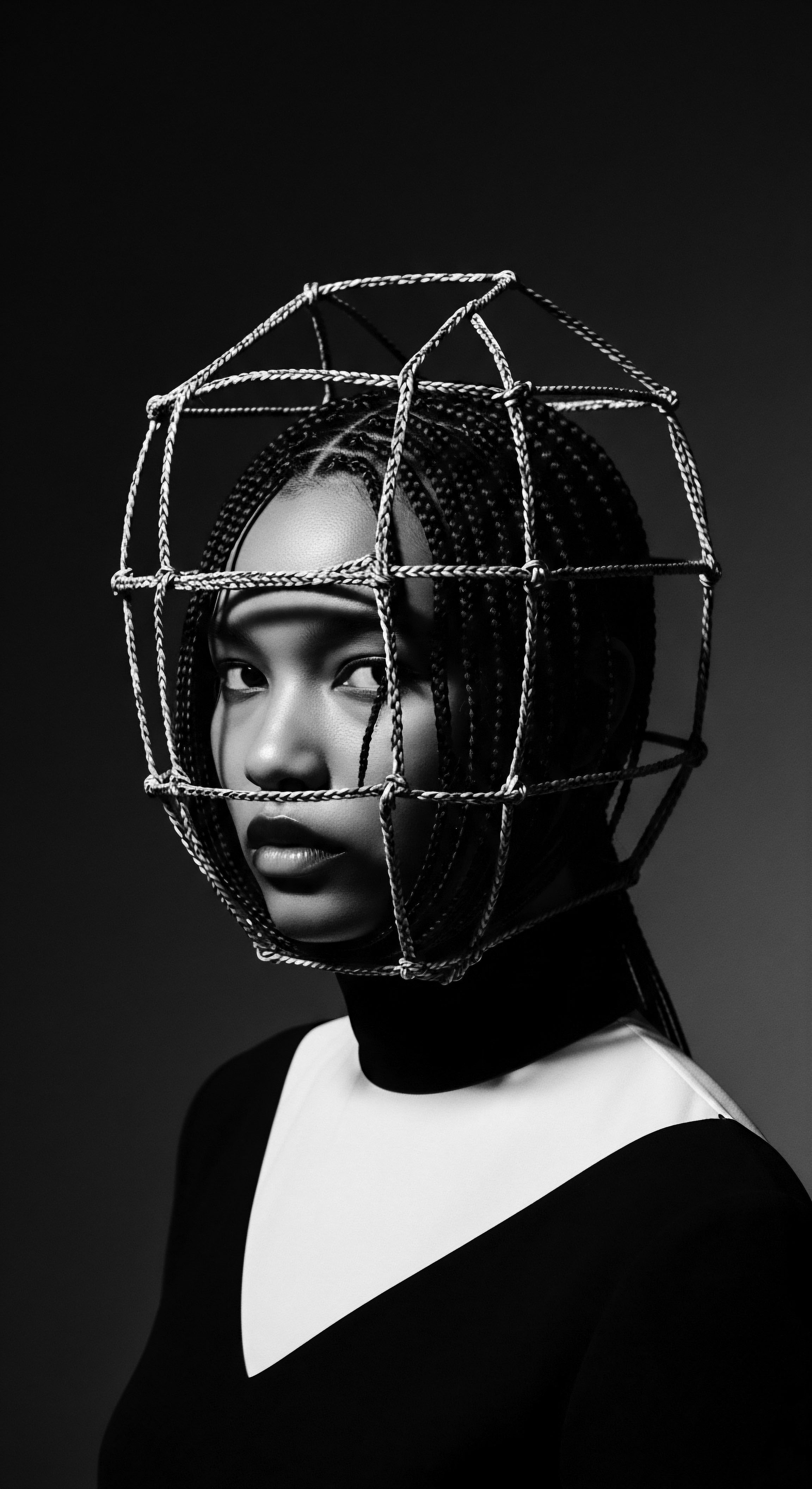
Roots
The very soul of a strand, particularly one adorned with the beautiful coils and textures that grace so many of us, pulses with stories. These are not merely tales of molecular structure or cosmetic effect, but narratives woven from ancestral practices, the ingenuity of survival, and the persistent wisdom passed across generations. To ask how shea butter seals textured hair is to begin an expedition into this profound legacy, a journey through the verdant landscapes of West Africa, where the sacred karité tree stands as a silent sentinel of tradition and life.
For individuals whose heritage is etched in the curls and kinks, this question is a rediscovery, a return to the wellspring of care that nourished our foremothers and continues to sustain us. It is an invitation to understand how elemental biology and ancient reverence converge in a substance as seemingly simple as a creamy butter, yet as complex in its historical and cultural significance.
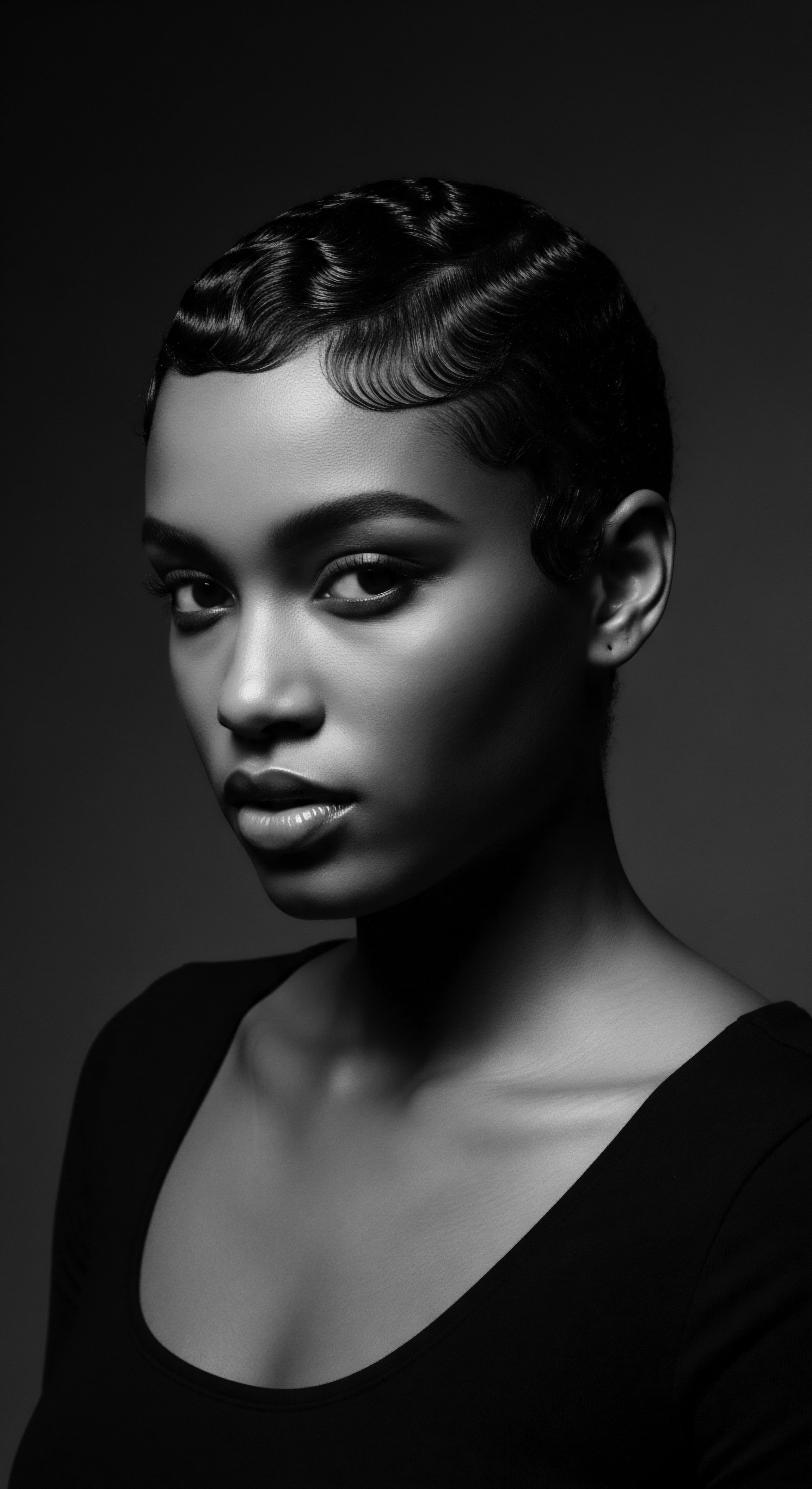
Ancestral Understanding of Textured Hair
For millennia, textured hair has been a crown, a canvas, a communicator of identity within Black and mixed-race communities. Before the advent of modern laboratories and chemical compounds, ancestral communities possessed a deep, intuitive understanding of their hair’s unique architecture. They knew the inherent dryness of coily strands, observed how environmental factors impacted their resilience, and recognized the subtle cues that hair offered regarding overall well-being. This knowledge was experiential, honed over countless generations of living in close communion with nature and the body.
The wisdom was codified in rituals, passed from elder to youth, often whispered through the braiding sessions, through the gentle anointing of scalps, and through communal preparations of botanical concoctions. The methods were not abstract; they responded directly to the hair’s need for protection, moisture, and strength.
Consider the daily realities in West Africa, where the shea tree flourishes. The sun beat down, the winds carried dust, and life often demanded physical labor. Hair, unprotected, would suffer.
The recognition that certain natural substances, like the butter from the karité tree, offered profound protection arose from this lived experience and keen observation. It was a symbiotic relationship between people, their environment, and the gifts of the earth.
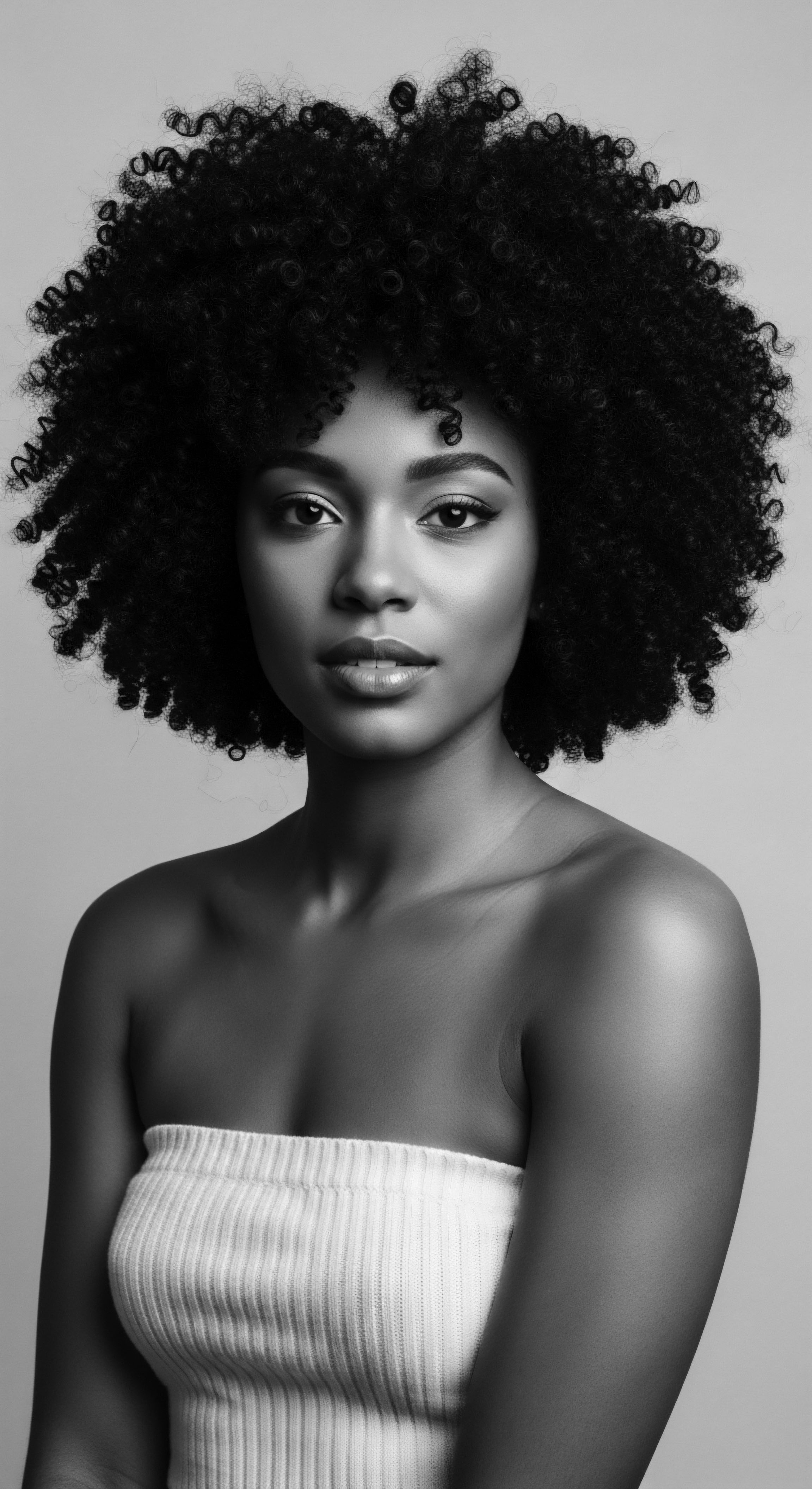
Shea Butter A Historical Constant
Shea butter, scientifically derived from the nuts of the Vitellaria Paradoxa tree, has been a central pillar of African skin and hair care for thousands of years. Its use has been documented as far back as the 14th century, with historical accounts even linking it to figures such as Cleopatra, who reputedly had jars of shea oil transported for her beauty routines. This butter, often referred to as “women’s gold” due to its economic significance and the labor of women in its production, holds a ceremonial and deeply practical place in many West African communities.
The traditional method of extracting shea butter, still practiced in rural areas today, involves a meticulous, multi-step process ❉ harvesting the fallen fruits, removing the pulp, drying and crushing the nuts, roasting, grinding into a paste, kneading with water to separate the fat, and finally boiling and cooling the rich substance. This laborious, community-driven production reinforces its cultural value, embedding the very act of its creation within a heritage of shared effort and ancestral skill. It is a process that honors the tree, the earth, and the hands that coax its richness forth.
Shea butter, from the karité tree, serves as a testament to ancestral ingenuity, providing historical moisture and protection for textured hair across generations.
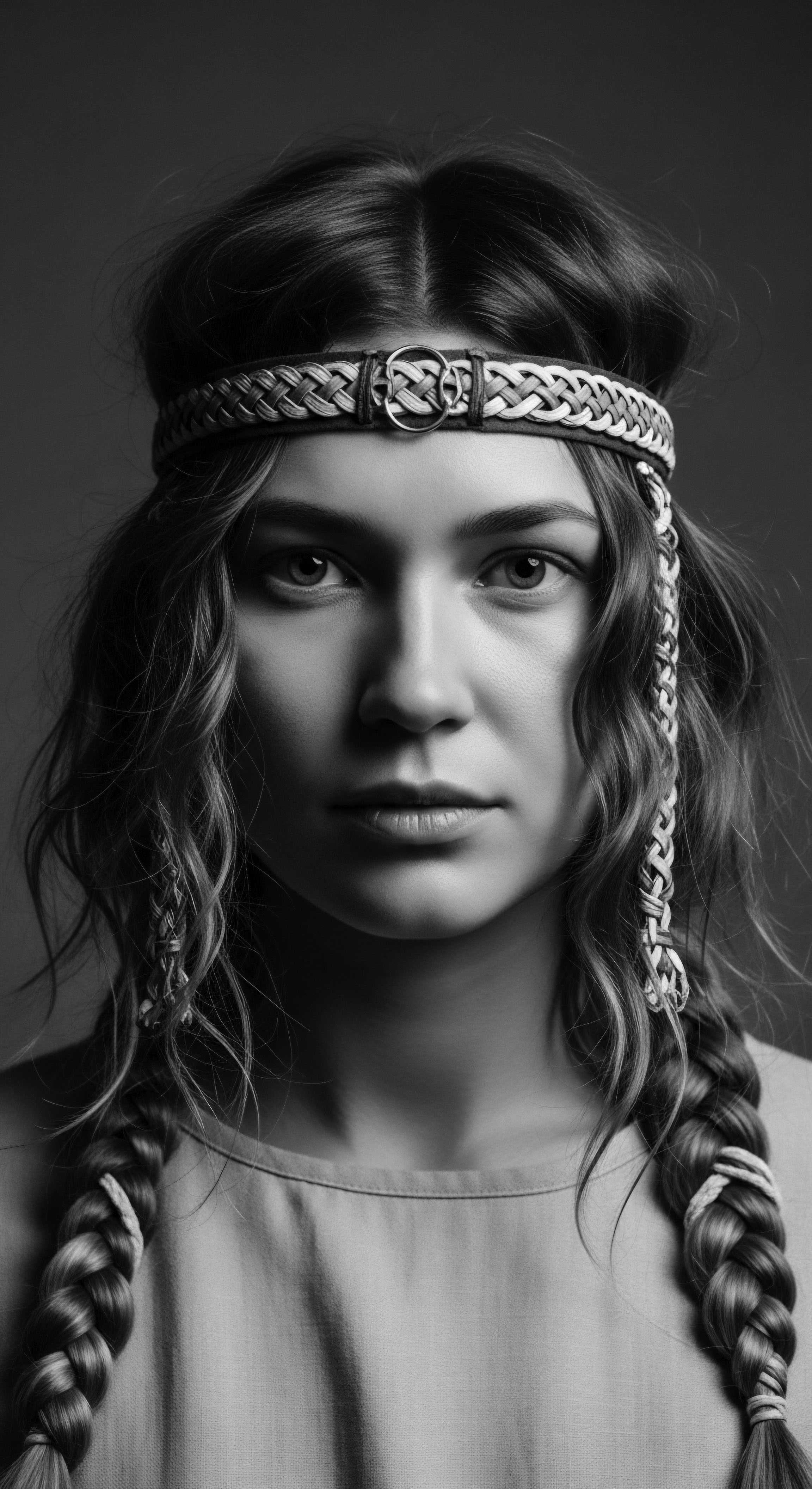
The Anatomy of Textured Hair and Shea Butter’s Interplay
Textured hair, with its characteristic spirals, coils, and zigzags, possesses a unique follicular structure. Unlike straight hair, where natural oils from the scalp can easily descend along a smooth shaft, the twists and turns of coily and curly strands create challenges for sebum distribution. This structural reality often renders textured hair naturally drier and more susceptible to moisture loss.
Herein lies shea butter’s profound historical and scientific significance for sealing. The butter is rich in Fatty Acids, including oleic, stearic, palmitic, and linoleic acids, alongside vitamins A, E, and F. These compounds provide it with both emollient and occlusive properties.
When applied to textured hair, shea butter forms a protective film around the hair shaft. This lipid barrier helps to reduce the rate at which water evaporates from the hair, effectively “sealing” in the hydration that has been previously applied or is naturally present.
The fatty acids within shea butter also help to smooth the hair’s outermost layer, the Cuticle. When hair is dry, the cuticle scales lift, making the hair feel rougher and allowing moisture to escape more readily. Shea butter, with its nourishing profile, helps to lay these cuticles flat, creating a smoother surface that not only locks in moisture but also imparts a healthy sheen and reduces frizz.
This physical smoothing action, combined with its occlusive nature, is at the heart of its sealing capability. It is a dual action that reflects a deep understanding, whether intuitive or scientific, of hair’s fundamental needs.
| Aspect of Textured Hair Natural Dryness |
| Ancestral Understanding / Heritage Recognized necessity for regular oiling and protective styling in harsh climates. |
| Scientific Explanation for Shea Butter's Action Coily hair structure hinders sebum travel; shea butter's fatty acids provide external lipids to compensate. |
| Aspect of Textured Hair Moisture Retention |
| Ancestral Understanding / Heritage Traditional methods focused on rich emollients to preserve moisture in dry conditions. |
| Scientific Explanation for Shea Butter's Action Shea butter creates an occlusive layer, slowing water evaporation from the hair shaft. |
| Aspect of Textured Hair Cuticle Condition |
| Ancestral Understanding / Heritage Observation of hair's texture changing with hydration; desire for smooth, pliable hair. |
| Scientific Explanation for Shea Butter's Action Fatty acids and unsaponifiables smooth cuticle scales, reducing friction and moisture loss. |
| Aspect of Textured Hair Environmental Protection |
| Ancestral Understanding / Heritage Used as a balm against sun, wind, and dust. |
| Scientific Explanation for Shea Butter's Action Forms a barrier against external stressors, potentially offering mild UV protection. |
| Aspect of Textured Hair This table illustrates how the observed needs of textured hair, understood ancestrally, align with the scientific properties of shea butter, reinforcing its historical role in hair preservation. |
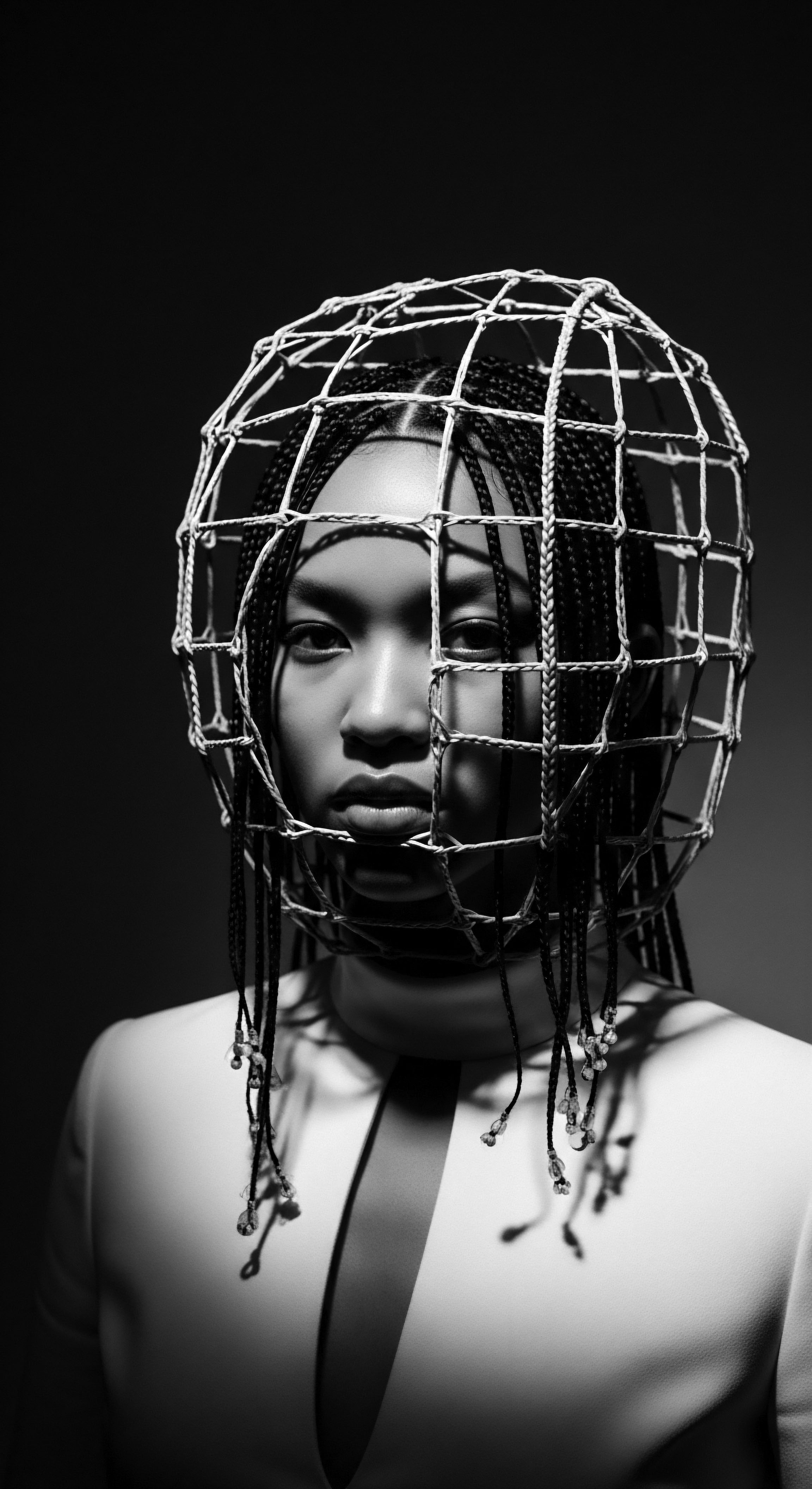
Ritual
The journey of shea butter from tree to strand is not merely a transfer of substance; it is a ritual, a profound connection to generations past who understood hair care as an art, a communal practice, and a declaration of identity. The methods by which shea butter has been, and continues to be, applied reflect a deep wisdom concerning the very rhythm of textured hair. These are methods honed through centuries of intimate engagement with the material itself, a dance of hands and hair that extends beyond simple application into the realm of ancestral veneration.
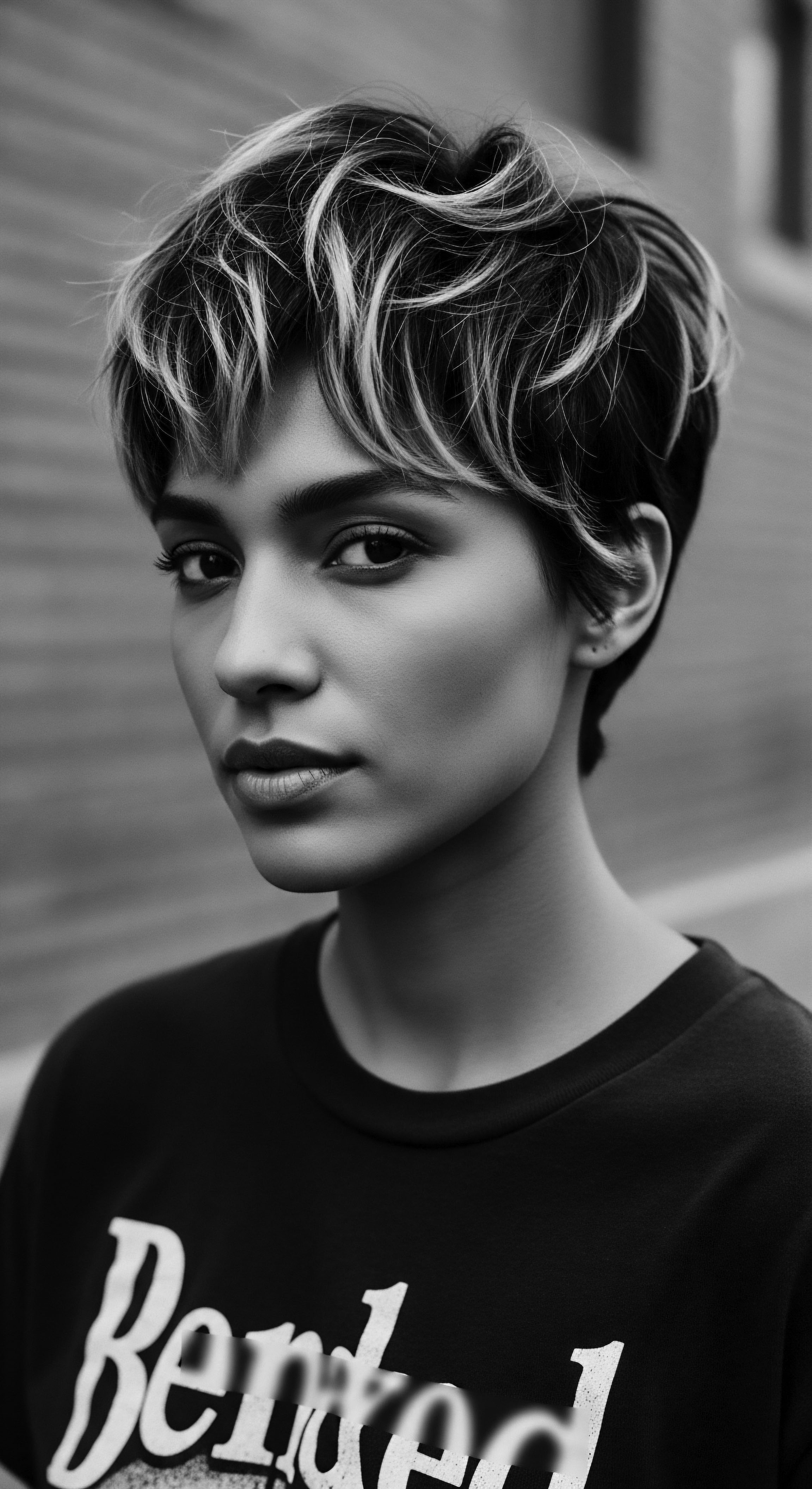
How Does Shea Butter’s Texture Guide Traditional Application?
The physical consistency of raw shea butter is not accidental to its efficacy; its rich, often solid form at room temperature necessitates a deliberate warming process before application. This act of melting a small amount between the palms, transforming it from a firm mass into a supple oil, is itself a minor ritual. This warming allows the butter’s components to become more amenable to spreading evenly, coating each delicate strand without undue tugging or breakage. The traditional understanding of this texture guided the application methods, ensuring a thorough distribution that could truly encapsulate the hair in a protective layer.
In ancestral contexts, this preparation might have involved warming shea butter over a low flame or in the warmth of the sun, perhaps mixed with other traditional oils or herbs. The softened butter would then be worked through sections of damp hair, allowing the water to be captured by shea’s occlusive capabilities. This precise layering of moisture followed by a sealing agent is a cornerstone of effective care for textured hair, a practice understood intuitively long before modern science articulated the principles of the L.O.C.
(Liquid, Oil, Cream) method. The very act of preparing and applying shea butter became a meditative practice, fostering connection to the hair and to the communal wisdom surrounding its care.
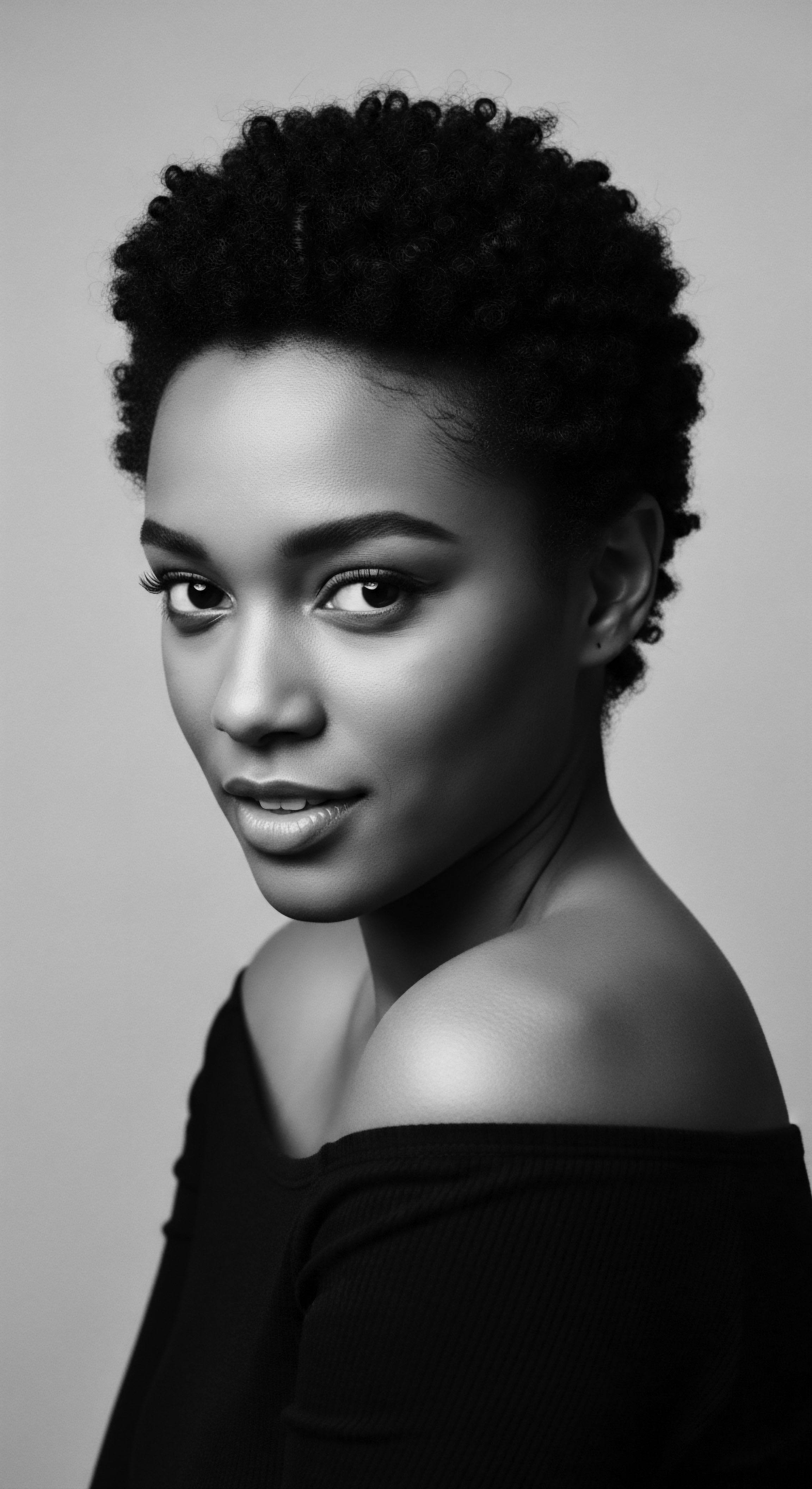
Protective Styling Rooted in Ancient Practices
The history of textured hair styling is largely a history of protective measures, born from a necessity to shield vulnerable strands from environmental stressors and daily manipulation. Braids, twists, and cornrows are not merely aesthetic choices; they are historical safeguards, strategies for length preservation and health, often passed down through matriarchal lines. Shea butter holds a central role in these enduring traditions.
Before or during the creation of these protective styles, shea butter would often be applied generously to the hair. This serves several purposes that bridge ancient practice and modern understanding:
- Lubrication ❉ The smooth, rich consistency of melted shea butter reduces friction during the braiding or twisting process, lessening tension and minimizing breakage.
- Moisture Retention ❉ By sealing moisture into the hair prior to braiding, shea butter ensures that the strands remain hydrated for the duration of the style, sometimes for weeks. This is particularly vital when hair is tucked away, as it prevents excessive dryness.
- Scalp Care ❉ Shea butter, with its soothing and anti-inflammatory properties, can be massaged into the scalp during styling to alleviate dryness and discomfort, supporting a healthy environment for growth. This also provides a foundation for the hair emerging from the scalp to be nourished.
The practice of applying shea butter to hair before protective styling highlights an ancestral understanding of sealing as a means to longevity and resilience for textured strands. It speaks to a deep, pragmatic wisdom where adornment and preservation were inextricably linked.

The Tools of Tradition and Their Connection to Shea Butter
The tools used in traditional hair care were extensions of the hand and the environment, crafted from natural materials that complemented the properties of ingredients like shea butter. While modern tools have evolved, the principles of gentle manipulation and effective distribution remain.
Consider the traditional wide-toothed combs, often carved from wood or bone. These tools, used in conjunction with a softening agent like shea butter, would help to detangle hair gently, minimizing breakage. The butter’s conditioning property aids significantly in detangling, making the hair more pliable and easier to work through. This harmony between tool and ingredient reflects a meticulous approach to care, where each element contributed to the hair’s overall well-being and ability to retain its moisture.
Combs for Detangling ❉ Historically, wide-toothed combs were crafted to navigate dense, coily hair without causing undue stress or breakage.
Fingers as Primary Tools ❉ The hands themselves remained the most important tools, allowing for sensitive application and manipulation, ensuring that shea butter reached every strand.
Clay Pots and Gourds ❉ Used for storing and sometimes warming the shea butter, these natural vessels maintained the integrity of the butter and supported its ritualistic use.
The tools of tradition underscore a philosophy of care that prioritizes preservation and respect for the natural state of textured hair, with shea butter as a central element enabling these practices.
The historical use of shea butter in protective styling and with traditional tools reflects an ancestral understanding of moisture retention and gentle care.
The application of shea butter also extends to defining natural curl patterns. When applied to damp hair, especially after a water-based moisturizer, shea butter provides a soft hold, smoothing the hair cuticle and reducing frizz, which helps to define coils and curls. This method, which creates a protective coating and enhances the hair’s natural vibrancy, has been a part of styling textured hair for ages, allowing individuals to celebrate their unique patterns while ensuring lasting hydration.
| Element Styling Techniques |
| Traditional Context Communal braiding, twisting, threading for protection and social expression. |
| Modern Parallel / Shea Butter's Continuing Role Protective styles (braids, twists, locs) still rely on shea butter for moisture sealing and scalp health. |
| Element Hair Tools |
| Traditional Context Hand-carved wooden combs, natural finger manipulation. |
| Modern Parallel / Shea Butter's Continuing Role Wide-tooth combs and fingers remain primary detangling and application tools, complemented by shea butter's slip. |
| Element Preparation |
| Traditional Context Warming butter by hand or gentle heat, sometimes with other oils. |
| Modern Parallel / Shea Butter's Continuing Role Melted or whipped shea butter applied to damp hair to maximize absorption and sealing. |
| Element Shea butter's consistent presence across traditional and contemporary textured hair care practices underscores its timeless efficacy and adaptability within evolving beauty rituals. |

Relay
The passage of knowledge from one generation to the next, a relay of wisdom concerning hair and its care, forms the bedrock of textured hair heritage. Shea butter, in this narrative, is not a static ingredient; it is a living conduit, carrying ancestral practices into contemporary routines. The complexities of how shea butter truly seals textured hair reach beyond a simple physical barrier, delving into a deeper understanding of its lipid profile, its interaction with the hair’s own biology, and its long-standing cultural affirmation. This exploration is a testament to the sophistication of traditional care, now often validated by the lens of modern science.

How Does Shea Butter’s Molecular Structure Contribute to Sealing?
At its core, shea butter’s efficacy as a sealant stems from its particular lipid composition. It contains a significant proportion of saturated fatty acids, primarily Stearic Acid and Oleic Acid. Stearic acid, a long-chain saturated fatty acid, is particularly important.
When applied to the hair, these fatty acids arrange themselves to form a hydrophobic (water-repelling) layer. This layer does not add moisture to the hair, but rather creates a physical barrier that slows the rate of water evaporation from the hair shaft.
Hair, especially textured hair, is highly susceptible to losing moisture to the surrounding environment due to its open cuticle structure when dry. The unique coiling patterns mean that the cuticle scales may not lie as flat as those on straight hair, creating more opportunities for moisture to escape. Shea butter’s lipid film acts like a protective shield, minimizing this evaporative loss and keeping the internal moisture levels stable for longer durations. It is this occlusive property, the ability to form a non-permeable layer, which defines its sealing action.
Furthermore, shea butter contains a notable amount of Unsaponifiables, a group of compounds including triterpenes, phytosterols, and vitamins A and E. These unsaponifiables contribute to shea butter’s therapeutic properties, such as its anti-inflammatory effects on the scalp and its antioxidant benefits. While their direct role in “sealing” is less about physical barrier formation and more about overall hair and scalp health, a healthy scalp and strong hair shafts are preconditions for effective moisture retention. When the hair cuticle is compromised by damage or dryness, its ability to hold moisture is diminished; the nourishing elements in shea butter work to condition the hair, helping to smooth these cuticles and thereby indirectly enhancing the sealing effect.
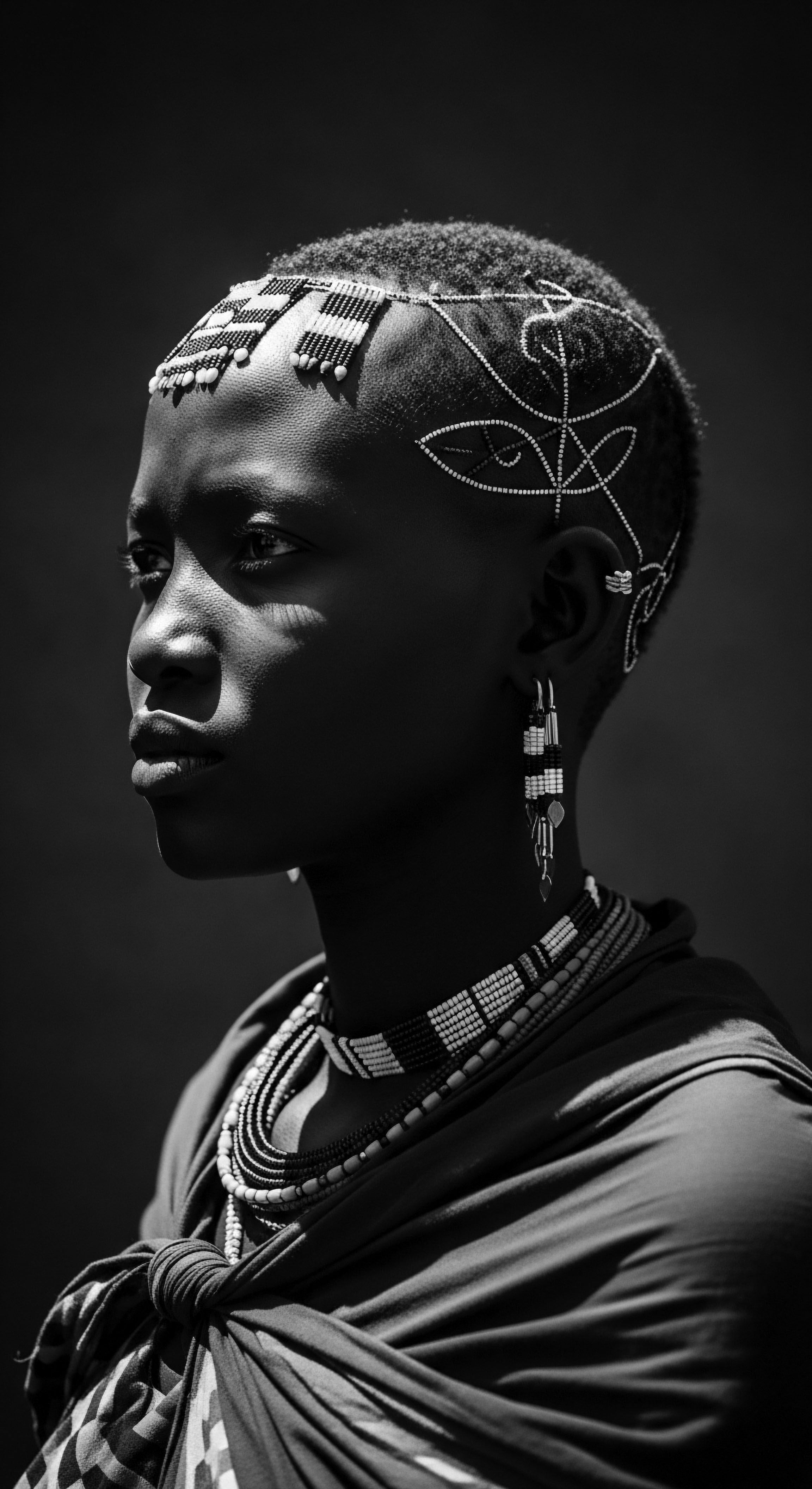
Ancestral Rituals in Contemporary Hair Wellness
The application of shea butter as a sealing agent is often the final act in a multi-step hair care regimen that prioritizes hydration. This layered approach is deeply rooted in ancestral wisdom, where water, often infused with botanicals, was the first step in moisturizing, followed by a heavier balm to lock it in. The concept of “moisture” itself, viewed through an ancestral lens, was not merely about cosmetic softness, but about hair’s vitality and strength, its ability to withstand daily life and manipulation without succumbing to breakage.
A significant dimension of this heritage is the practice of nighttime care. Across many African and diasporic cultures, preparing hair for sleep was, and remains, a sacred ritual. This might involve re-moisturizing with water or a light mist, then applying shea butter, and finally protecting the hair with coverings.
- Cloth Wraps ❉ Historically, women used soft cloths or headwraps made from natural fibers like cotton to protect their hair during sleep, preventing moisture loss and minimizing friction against rough sleeping surfaces.
- Bonnets and Scarves ❉ The modern satin or silk bonnet and scarf are direct descendants of these traditional coverings, continuing the legacy of protecting hair from tangling, frizz, and moisture evaporation while sleeping.
- Shea Butter Application ❉ A thin layer of shea butter before wrapping helps to reinforce the sealed moisture, ensuring that the hair remains hydrated throughout the night, crucial for preserving style and preventing breakage.
This nighttime sanctuary is a continuation of practices designed to preserve the hair’s integrity, ensuring that the efforts of daytime care are not undone by the friction and environmental exposure of sleep. The systematic layering of hydration and occlusive agents like shea butter, coupled with protective coverings, speaks to a holistic approach where hair care is interwoven with daily rhythms and the pursuit of long-term health.
The molecular composition of shea butter, rich in fatty acids and unsaponifiables, underpins its ability to form a protective barrier, reducing moisture loss from textured hair.

A Heritage of Resilience ❉ The Case of the Dogon Women
To illustrate the profound connection between shea butter, hair sealing, and cultural resilience, consider the Dogon people of Mali. Their traditional hair care practices, passed down through generations, are intrinsically linked to their way of life and the harsh, arid environment they inhabit. Dogon women are renowned for their elaborate hairstyles, often adorned with cowrie shells and intricate braiding patterns that serve not only as aesthetic expressions but also as practical shields against the elements.
In their daily routines, shea butter serves as a cornerstone of hair preservation. After washing, often with traditional herbal cleansers, the hair is thoroughly moisturized with water. Immediately following this, generous amounts of shea butter are applied, worked into the intricate twists and braids, effectively sealing the hydration within the hair shaft. This practice is not merely about cosmetic appeal; it is a vital strategy for maintaining hair health in a climate that could otherwise lead to extreme dryness and breakage.
This systematic use of shea butter allows their hair, despite constant exposure to sun and dust, to retain moisture, pliability, and strength, contributing to the longevity of their complex protective styles and serving as a visible marker of cultural continuity and well-being (Gallagher, Dueppen & Walsh, 2016). The archaeological evidence from Kirikongo, Burkina Faso, which indicates the processing of shea for over two millennia, further underscores the deep historical roots and sustained relevance of this plant and its butter in West African cultures, affirming its enduring role in practices that protect and honor textured hair.
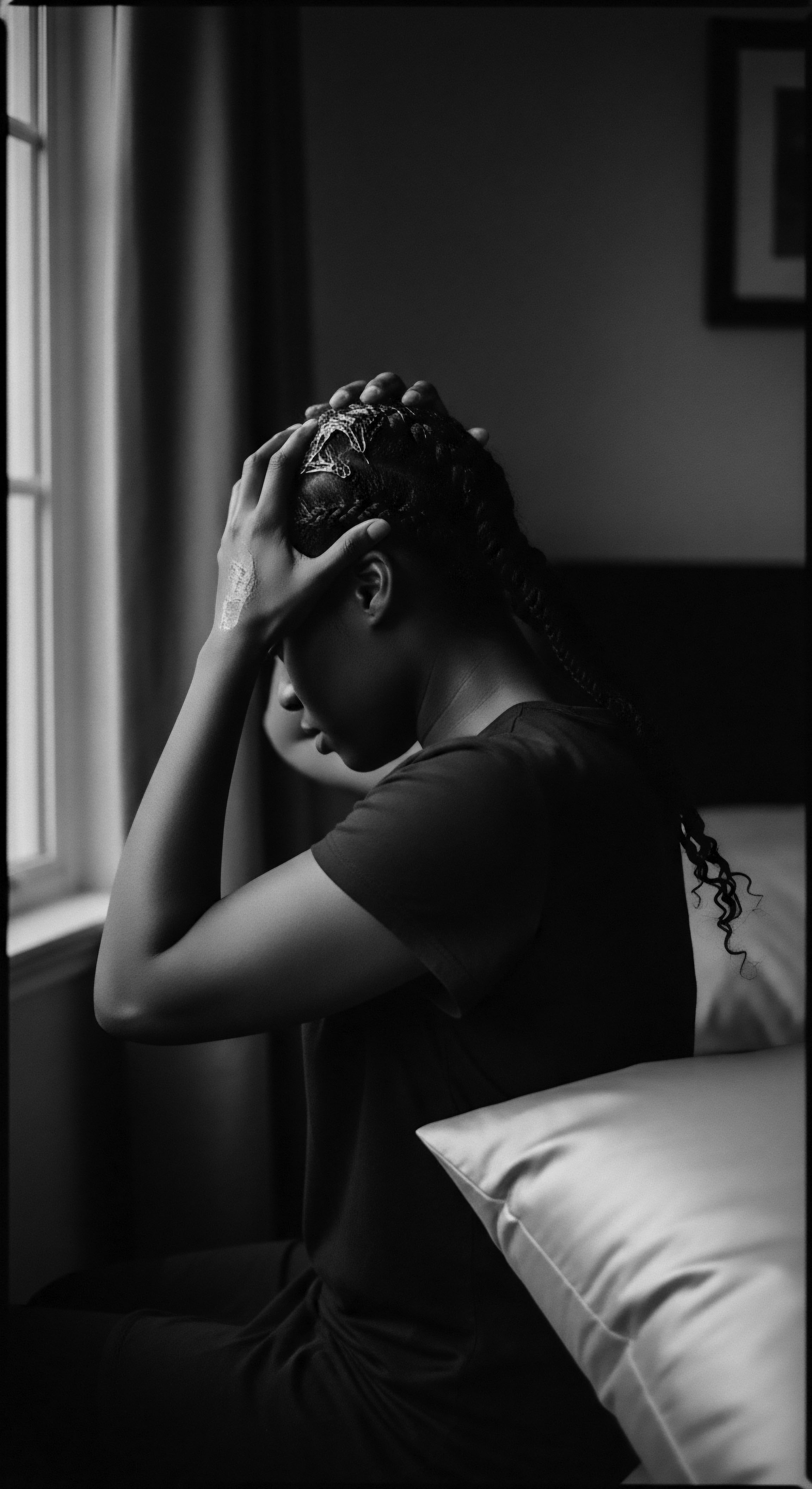
The Dialogue Between Traditional and Modern Understanding
The ancestral knowledge concerning shea butter’s efficacy finds profound corroboration in modern scientific understanding. The “sealing” action, once understood through observed results—softness, reduced breakage, enhanced sheen—is now explained by the science of occlusion and lipid chemistry. The fatty acid profile of shea butter creates a barrier, while its vitamins and unsaponifiables contribute to overall hair and scalp vitality. This convergence of traditional wisdom and contemporary analysis reinforces the value of ancestral practices, showing them to be not just cultural artifacts, but astute applications of natural resources.
This dialogue invites a deeper appreciation for the intuitive science practiced by our forebears. They understood hair’s delicate balance, its need for protection, and the potent remedies found in nature. Their methods, refined over millennia, inform modern textured hair care, reminding us that the most effective solutions often lie in the earth’s simplest, most profound gifts.
The continued preference for raw or unrefined shea butter among those seeking authentic benefits also speaks volumes. Unrefined shea butter retains more of its natural vitamins, fatty acids, and unsaponifiable components, offering a fuller spectrum of benefits compared to its refined counterparts. This preference is a testament to the enduring respect for the original, unprocessed form of this traditional ingredient, mirroring the ancestral focus on the pure gifts of the karité tree.
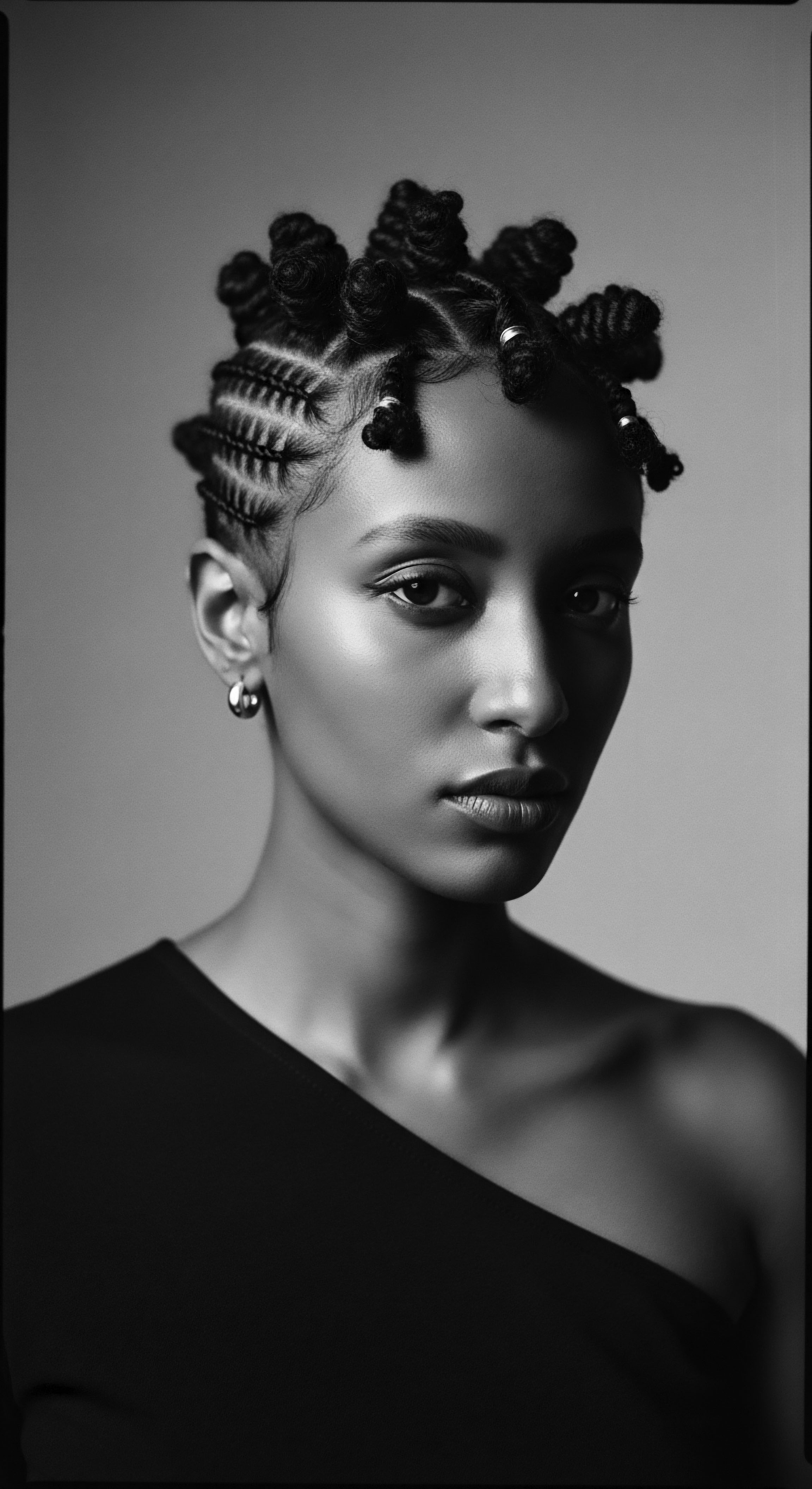
Reflection
To consider how shea butter seals textured hair is to undertake a quiet meditation on heritage itself. This humble butter, extracted from the kernel of the karité tree, is more than a botanical wonder; it embodies a living, breathing archive of ancestral wisdom, resilience, and identity. Its journey from the sun-drenched savannahs of West Africa to the coiled strands of the diaspora is a testament to the enduring power of tradition and the timeless human connection to natural rhythms.
The protective embrace of shea butter, the smooth, occlusive film it forms around each strand, is not just a scientific phenomenon. It is an echo of hands that have smoothed, nurtured, and adorned hair through countless generations. It is a quiet affirmation of self-worth and belonging, a physical link to a legacy of beauty practices that thrived despite immense challenges. The very act of applying this butter, of feeling its richness melt into the hair, connects us to the profound ingenuity of those who came before us, who understood intuitively what science now explains with precision.
Roothea’s ‘Soul of a Strand’ ethos finds its deepest resonance in this understanding. Our hair, in its magnificent diversity of texture, is a sacred part of ourselves, bearing the imprints of history, culture, and personal story. Shea butter, as a sealant, helps preserve that narrative, protecting the integrity of each helix as it spirals toward the future.
It is a symbol of continuity, a practice that bridges time, reminding us that the deepest care for our textured hair is, at its heart, an act of honoring our collective past and securing a vibrant, unbound future. The legacy of the karité tree and its golden butter remains a luminous guiding light, illuminating the path for authentic care, rooted in the profound wisdom of heritage.

References
- Gallagher, D. Dueppen, S. & Walsh, A. (2016). Archaeological Evidence of Shea Processing in Western Burkina Faso. African Archaeological Review, 33(3), 297-312.
- Healthline. (2018). Shea Butter for Hair ❉ Raw, Hair Growth, and Natural Hair. Retrieved from Healthline.com.
- Minimalist Beauty. (n.d.). Pros & Cons of Shea Butter for Hair. Retrieved from MinimalistBeauty.com.
- Paulski Art. (2024). The Rich History of Shea Butter and Its Origins. Retrieved from PaulskiArt.com.
- Regirl. (2020). 6 Ways to Use Shea Butter for Natural Hair. Retrieved from Regirl.co.
- MyHair.ai. (2025). Ultimate Shea Butter for Hair Growth ❉ 2025 Expert Tips. Retrieved from MyHair.ai.
- Wuli Hair Care. (2025). The Abundant Benefits of Shea Butter for Curly Hair. Retrieved from WuliHairCare.com.
- Faith In Nature. (n.d.). Shea Butter for Hair. Retrieved from FaithInNature.co.uk.
- Anveya. (n.d.). A Complete Guide For Usage Of Shea Butter For Hair Care. Retrieved from Anveya.com.
- St.Botanica. (2024). Shea Butter for Hair ❉ Top 10 Benefits, Uses. Retrieved from StBotanica.com.
- Africa Imports. (n.d.). Traditional African Secrets For Long And Healthy Hair. Retrieved from AfricaImports.com.
- African Fair Trade Society. (2023). Does Shea Butter Straighten Hair?. Retrieved from AfricanFairTradeSociety.org.
- Ciafe. (2023). Shea Butter – Explainer. Retrieved from Ciafe.com.au.
- TERMIX. (2022). Shea butter benefits for hair. Retrieved from Termix.net.
- The Diva Shop Nigeria. (2023). Why We Love Shea Butter for Natural Hair. Retrieved from TheDivaShop.com.ng.
- Beauty Garage. (n.d.). Shea Story | Natural Shea Hair Care. Retrieved from BeautyGarage.in.
- Maui Moisture. (n.d.). The Power Of Shea Butter For Your Hair. Retrieved from MauiMoisture.com.
- Obscure Histories. (2024). The Globalization of Shea Butter. Retrieved from ObscureHistories.com.
- FirstSeed Organics. (2023). Does Shea Butter Grow Hair? (Beginners Guide). Retrieved from FirstSeedOrganics.com.
- Black Panther Strong. (n.d.). Afro Care ❉ Essential Tips for Healthy Curls. Retrieved from BlackPantherStrong.com.
- BeautyMatter. (2024). Inside Africa’s Global Shea Butter Phenomenon. Retrieved from BeautyMatter.com.
- African Fair Trade Society. (2023). Does Shea Butter Straighten Hair?. Retrieved from AfricanFairTradeSociety.org.
- BGLH Marketplace. (2017). How Whipped Shea Butter Has Aided in My Hair Growth. Retrieved from BGLH Marketplace.
